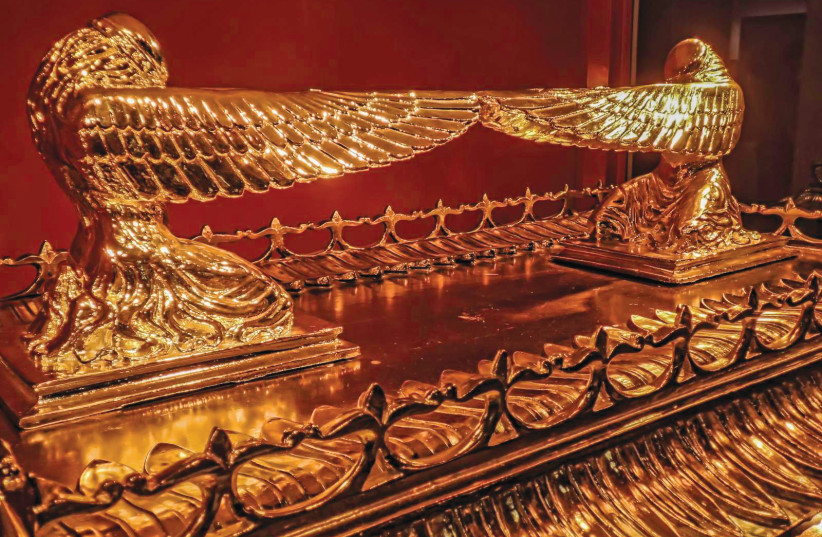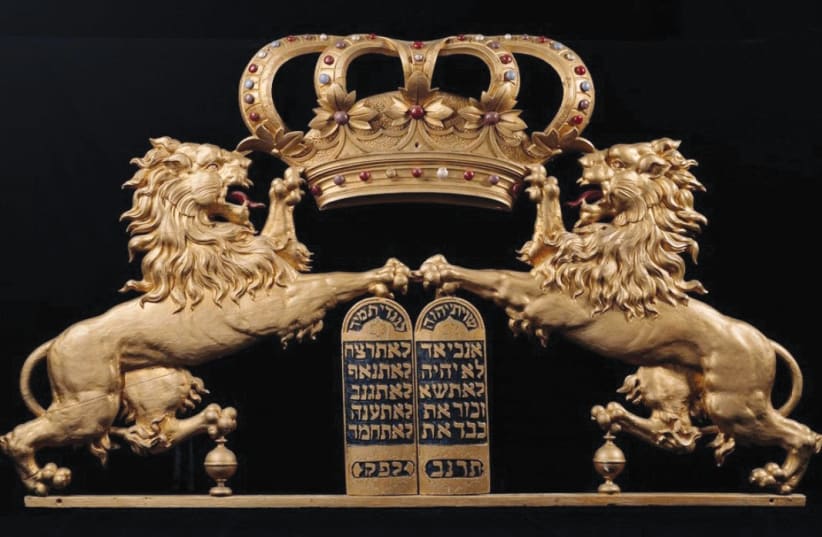
Western art and literature are fascinated by the Biblical cherubim that adorn the Ark of the Covenant. In popular culture, cherubim have round childlike faces, sweet dispositions and beaming smiles. No wonder when doting adults see a baby they tend to say, “What a little cherub!” It’s such a pity that the innocent, angelic child sometimes grows up to be a cruel, callous adult. Fortunately, some adults are known all their lives as nice people, angels and not ogres.
Cherubim appear in many biblical passages. The texts do not explicitly define them. Biblical culture might have known them well enough to not need a definition. Did they have bird or animal features? Did they have human characteristics? Were they a form of griffin? (is cherubim connected with the word griffin?) Were they linked to the winged creatures known in the surrounding cultures? Were they real or just imaginary? What we find in the Bible is not so much what they are but what they do.
What were the cherubim?
Outside the sanctuary they are guards or sentinels. Early in Genesis they keep watch with flaming swords at the entrance to the Garden of Eden. They are God’s agents. In some texts they are more or less the mainstay of God’s throne. They serve God in two ways, by protecting Him and helping Him to protect His world.
Nowhere is there a clear definition of their shape or form. In Ezekiel chapter 1 they have four faces – an ox, lion, man and eagle – representing four domains of Creation, domestic animals (symbolized by the ox), wild animals (the lion), birds (the eagle) and human beings. Ezekiel later changes the face of the ox to that of a cherub; we are not certain why. A Talmudic passage says that the ox was replaced because it recalled the Golden Calf. We now have two human faces: maybe one is a child and the other an adult.


In Psalm 18:11, God “rides upon a cherub.” Because this suggests wings and speed, some commentators see the cherubim as birds. A common view is that, despite their two wings, they have human forms, a male and a female. They are not necessarily children, though in rabbinic etymology cherub (k’ruv) is explained as k’ravia, “childlike.” There is an Akkadian verb karabu, “pray or bless.” Ezekiel 1 speaks of “living creatures” at the river Chebar. Is it possible that Chebar and keruv are linked?
Maybe cherubim are a generic class known for its function, like Canaanite, a trader, or Aramean, a herdsman. Cherubim could be a genus of angelic protectors, “a general term that referred to any fantastic being composed of elements from different natural creatures” (Koren Tanach of the Land of Israel, Exodus, p. 149). Biblical texts generally preface cherubim with the definite article; in Gen. 3:24, God stations the cherubim outside Eden. It is likely that the cherubim were a distinct group with a specific task.
Maimonides uses the word cherubim metaphorically. To him the cherubim on the Ark cover represent the functioning of nature, including the intellectual and spiritual activity of angels, who themselves are disembodied forces. There are two cherubim on the Ark cover; if there were only one, people might think it was the image of the One God.
The sanctuary has two cherubim, one on each side of the cover of the so-called mercy seat, their outstretched wings protecting the Ark of the Covenant. Amongst the fittings and furnishings of the sanctuary, the cherubim stretch their wings aloft and look down whilst turning to one another. Abravanel says the outspread wings represent thoughts that soar. Turning their faces to one another represents love for all human beings. To the rabbis, one cherub is male and the other female, making them a symbol of marital affection. These metaphors receive special attention in Freemasonry, where there is a duty to protect the sancta. The “outer guard” is stationed outside the door of the Lodge, to ensure that nothing improper can enter the inner sanctum. Possibly this echoes the European context in which the Masonic movement emerged in the 16th and 17th centuries, when political or social challenges were discussed behind closed doors.
The Torah asserts that the voice of God comes to Moses from between the cherubim. Hizkuni says this proves that the Deity Himself is neither corporeal or visible but is a non-physical presence whose voice and message can be heard.
In Exodus 25 it seems that the cherubim face each other, whereas in II Chronicles 3 they “face the house” (uf’neihem labayit), i.e. the walls of the sanctuary. Is it that there were design changes over the centuries? Or that in Chronicles, the task of the cherubim is to prevent intrusion, whereas Exodus focuses on what must be kept intact? Rabbi Yohanan says, “The cherubim face one another when Israel obey the will of God, but not when they disobey God’s will.” Rashbam thinks the cherubim miraculously change position depending on how the people conduct themselves.
The Natziv (Naftali Tzvi Yehudah Berlin, 19th century) says there were two historical eras. In the wilderness, when worship was in the Tabernacle, the people were obedient to God and the cherubim faced each other; after Solomon erected the Temple, the people often disobeyed God, and the cherubim faced the walls. The change in the position of the cherubim must have occurred during the time (a thousand years?) between the trek through the wilderness during the leadership of Moses, and the construction of the Temple in the time of Solomon.
There is a Talmudic statement, “See what a difference there is between the earlier and the later generations,” though the borderline between the generations is not defined. “The earlier generations” are said to be more religiously observant than “the later generations.” Maybe the cherubim were ashamed of the later generations and they turned away from each other because of the lack of brotherliness amongst the people. ■
The writer is emeritus rabbi of the Great Synagogue, Sydney.
